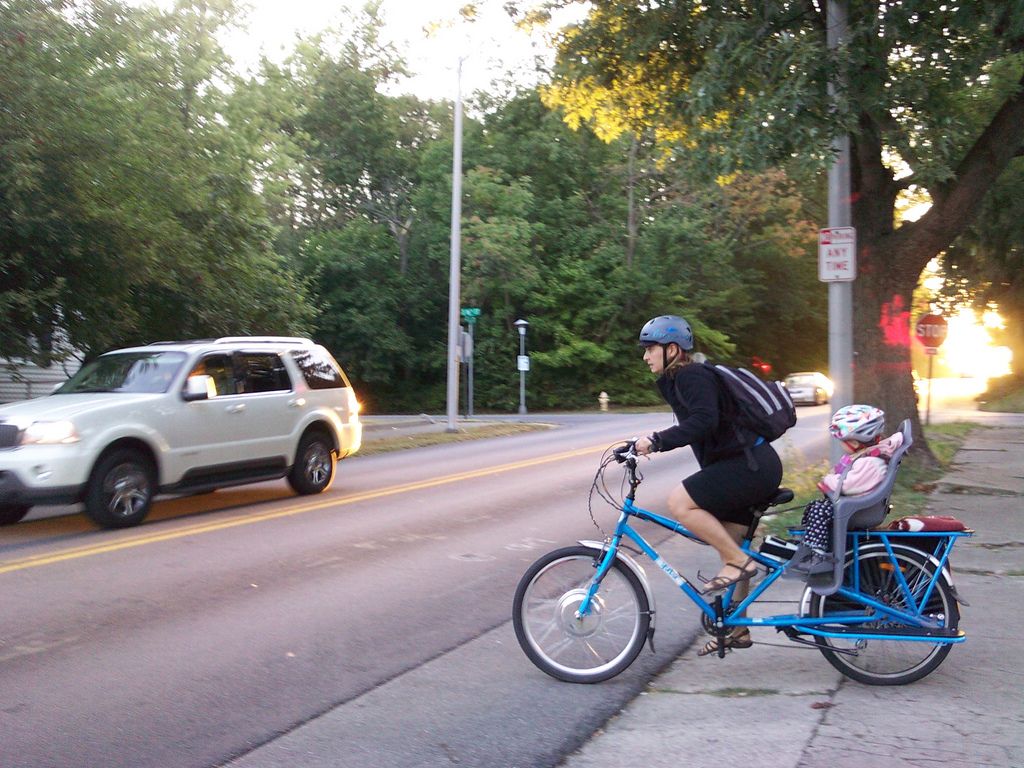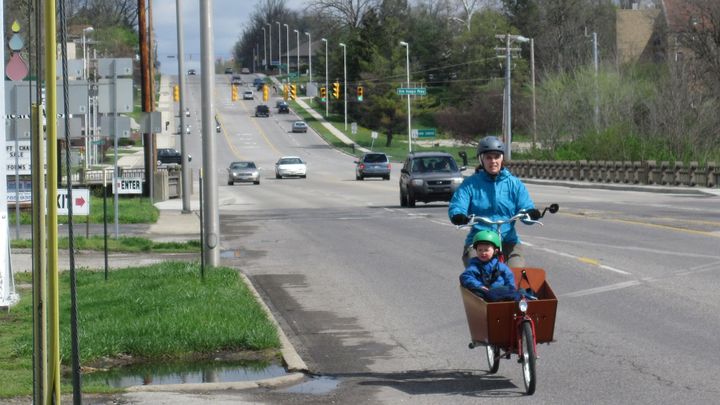How to avoid sweating when bike commuting

Here are some tips to avoid and manage sweating when bike commuting.
E-bikes help avoid sweating
If an e-bike is an option for you, e-bikes are great reducing cycling effort when you want to avoid exertion that can lead to sweating. Typically on the way home from work sweating is not an issue, so pedal as hard as you want on the evening commute– you'll still get more of a workout for the day then driving both ways.
One study found that e-bike riders get more exercise because they are riding more miles. E-bikes are more often replacing car trips, not bike trips, so that rings true.
Bike at a walking effort to avoid sweating
We associate running with sweating but not walking. Apply the same principle to biking and leave enough time to bike at walking effort to avoid sweating.
Learning to ride just below the sweat threshold can take some practice. I recall sprinting to church, planning to slow down as soon as I hit the threshold. I arrived there dry, only to start dumping sweat once I stopped moving. To successfully ride below the threshold you have to be able to anticipate when you might start to sweat some time before you actually do.
On the other hand, given a generous margin for error, it doesn’t have to be complicated. In my climate, for most of the year I can walk around for hours without starting to sweat much, while running would bring sweat on quickly.
Some habits may need to change. There can be an instinct to muscle up hills on a bike when you would otherwise be riding slowly. To keep the effort low, it may be necessary to slow down, gear down, or get off and walk up the hill.
Have a bike commuting season
Rather than saying "I can't bike commute because I sweat", find a combination of temperature, clothing and effort that works for you. For some, that may be year round, but it's also OK to have some alternate plan if the temperature is above some threshold where you anticipate a problem.
Choose your clothing carefully
Dress on the lighter side, to avoid overheating. Consider fabrics which are naturally odor resistant, like wool. Some brands like Patagonia also sell synthetics with odor-control additives to keep their fabrics smelling fresh for longer.
Ironically, some rain gear designed to keep you dry from rain is no breathable, making sweating more of a problem.
My approach has been to invest a very breathable waterproof rain jacket, and to give up on rain pants completely. On a rainy day I would either synthetic pants that would dry out fairly quickly or pack spare pants in a dry bag. I prefer either to the clammy feeling of rain pants.
For longer or hotter bike commutes, be prepared to freshen up at work
My personal experience with bike commuting has been distances of less then 3 miles (5km) in Indiana. By riding at walking effort, I've been able to bike in clothes that I can work in year around without a fuss.
But some people have longer commutes or just sweat more, so I offer the following advice based on my experience run commuting to work, which nearly always involved sweating on the away to work.
To manage sweating on my morning commute, I was prepared to make a transition once I got to work. First, I had clothes to change into. Sometimes I left some work clothes at work. Other times I brought some with me.
I had a place to change, along with some deodorant, a towel, some baby wipes and small fan. Even then, I had limits. Above a certain temperature, my run commuting season was over.
How to Bike Commute in a Suit

Dottie is a lawyer in Chicago who bike commutes. he has a great related post on how to bike commute in a suit.



Comments ()